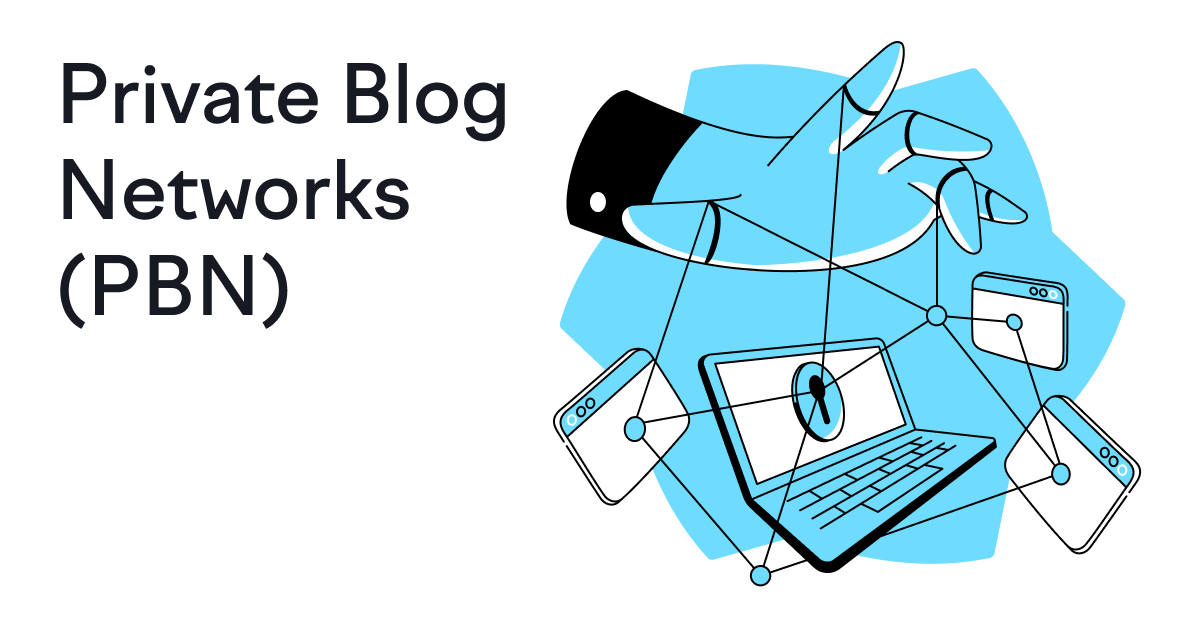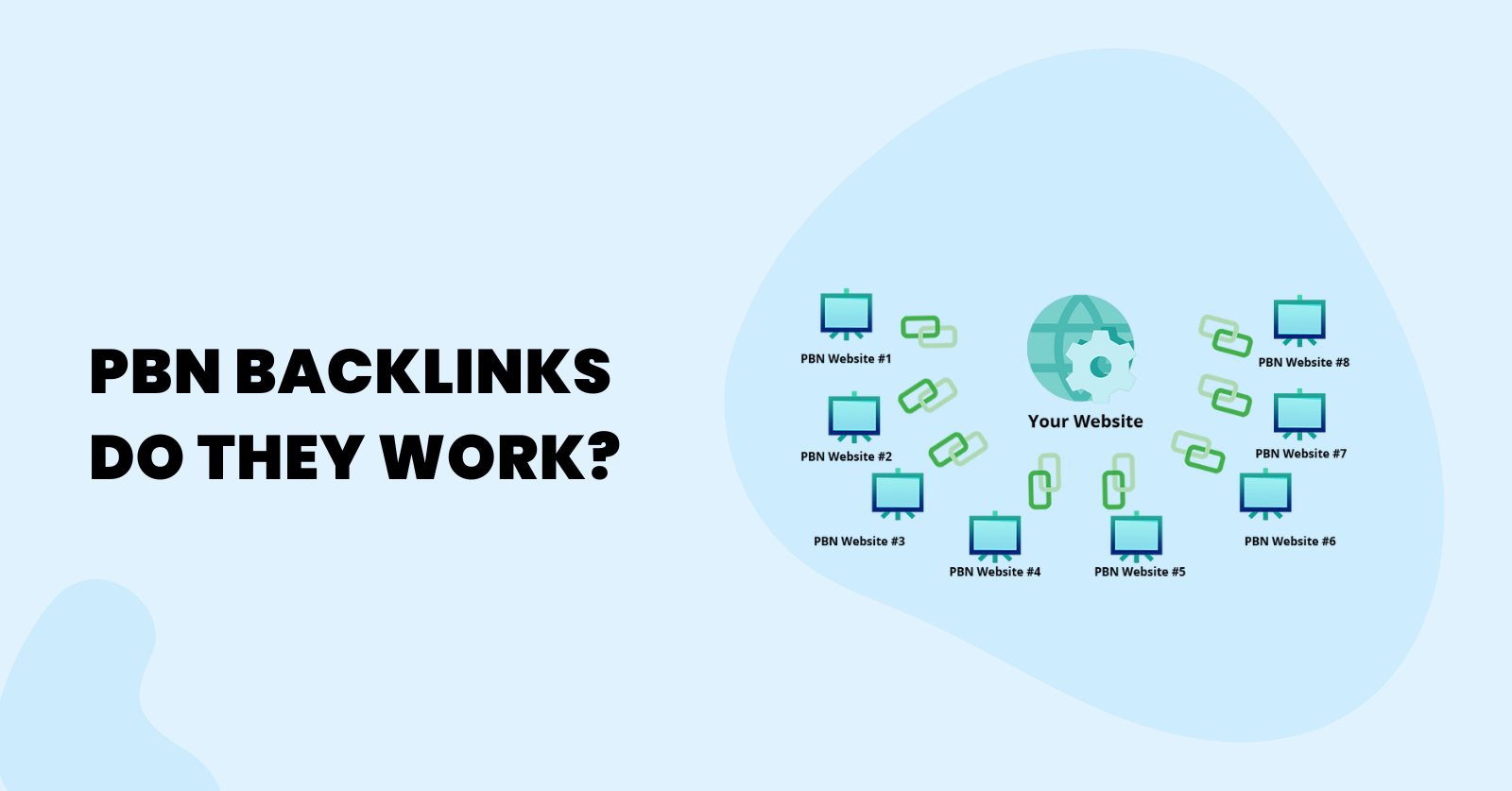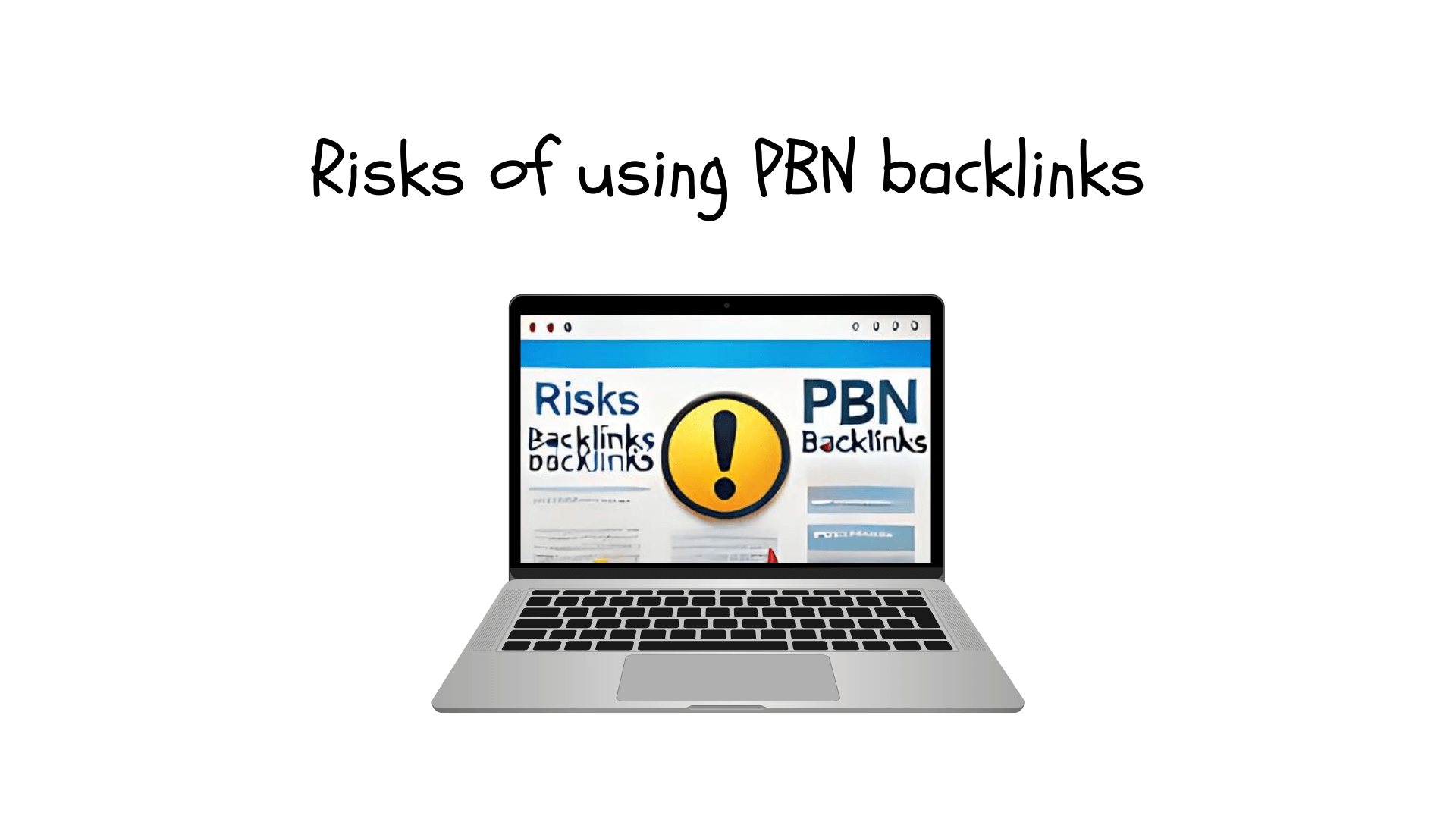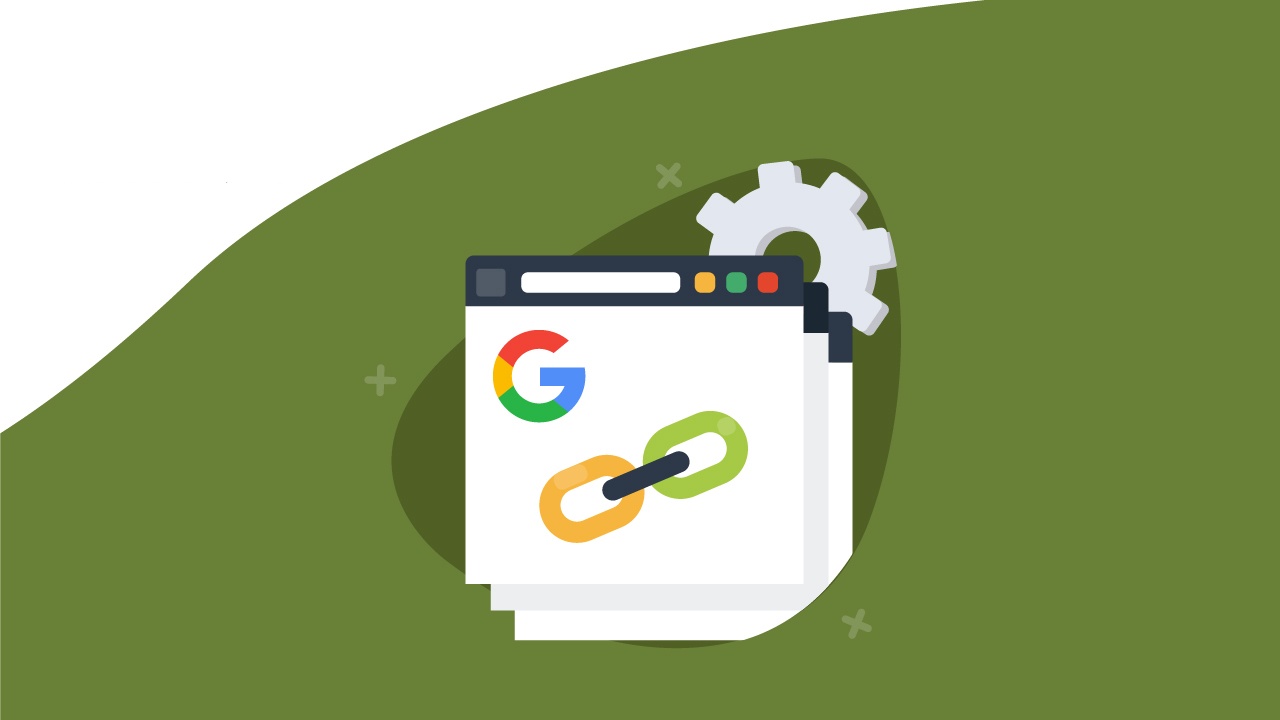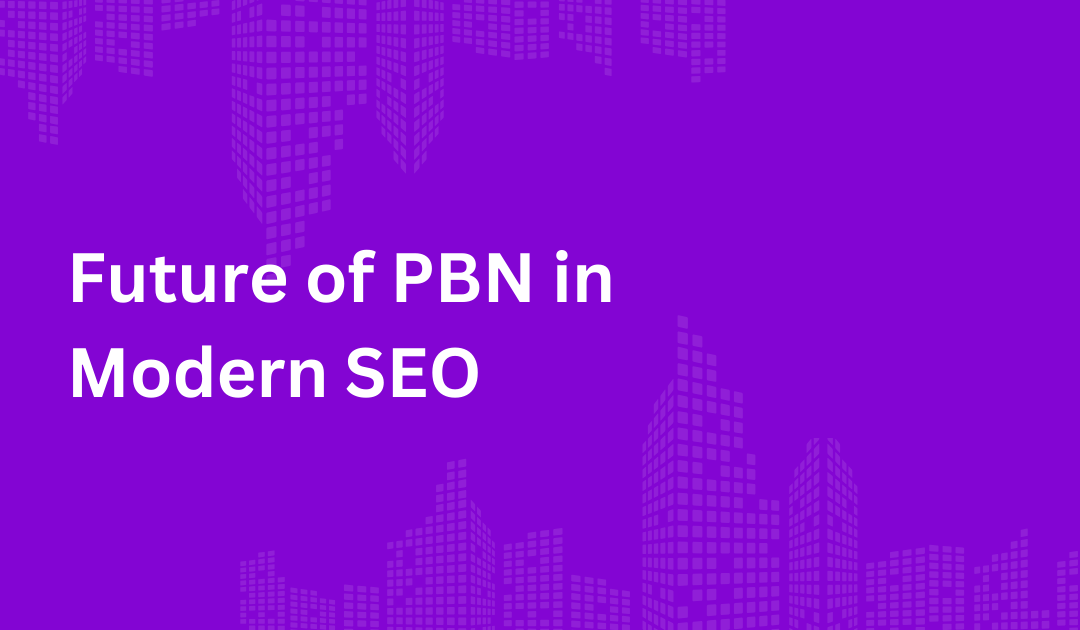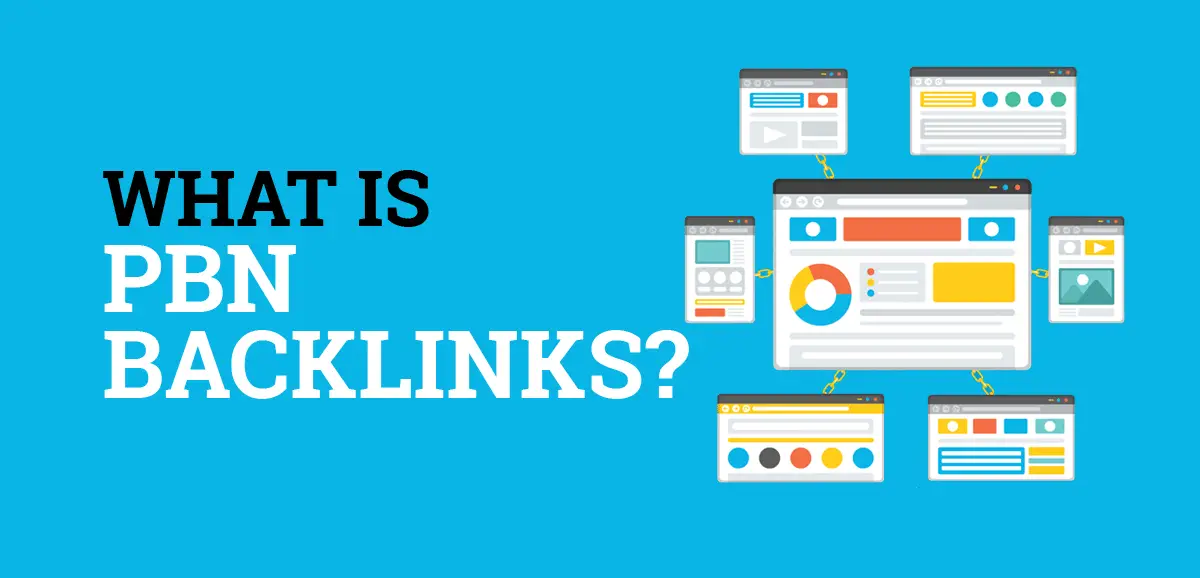
Backlinks play a pivotal role in the world of search engine optimization (SEO), acting as votes of confidence for a website’s authority and relevance. Among the various backlink strategies, Private Blog Networks (PBNs) have emerged as a controversial and widely debated topic.
PBN backlinks promise rapid SEO gains but come with significant risks. To help you make informed decisions, this article examines what PBN backlinks are, how they function, their potential benefits and risks, and ethical alternatives to consider.
1. What Are PBN Backlinks?
A Private Blog Network (PBN) is a group of websites created solely to link to another website and improve its organic search visibility. These "feeder" sites aim to pass link equity back to the main site, boosting its authority and ranking potential. PBN backlinks mimic earned links but are designed to artificially manipulate search engine algorithms.
PBNs are often built using expired domains with pre-existing authority and backlinks. SEOs who use PBNs value the control they offer over anchor texts, link placements, and timing. However, this tactic clearly violates Google’s Webmaster Guidelines, making it a black-hat SEO practice with significant risks.
Key Characteristics of PBNs:
- Websites are typically unrelated to the main site's niche.
- Often lack genuine user engagement or organic traffic.
- Designed solely to manipulate rankings rather than provide value to users.
2. How Do PBN Backlinks Work?
PBN backlinks function through a systematic setup designed to mimic natural linking patterns. Here’s how they work:
- Acquisition of Expired Domains: SEOs purchase expired domains with strong backlink profiles and domain authority.
- Content Creation: These domains are repurposed with relevant, albeit often low-quality, content to appear legitimate.
- Link Placement: Links to the "money site" (the target site) are embedded within the content.
- Ranking Influence: These backlinks are intended to create an artificial boost in search rankings by passing perceived authority to the target site.
PBN creators also go to great lengths to hide footprints that could reveal connections between the networked sites and the money site, such as using different hosting providers, themes, and IP addresses.
See Also: How Businesses Can Lead Climate Action Efforts (14 Strategies)
Common Techniques To Avoid Detection:
- Diversifying hosting providers to avoid shared IPs.
- Avoiding repetitive designs or themes across the network.
- Blocking backlink analysis tools like Ahrefs or Semrush from accessing PBN sites.
3. Why Do People Use PBNs?
Despite the risks, PBNs remain attractive to some SEO practitioners for two primary reasons:
Link Building Is Difficult And Unpredictable:
- White-hat tactics like outreach and digital PR are time-consuming and don’t guarantee results.
- PBNs offer control and consistency, allowing SEOs to create backlinks as needed.
Anchor Text Control:
- PBNs enable SEOs to manipulate anchor texts, which can help Google understand the context of the linked page.
- Organically earned links often use generic anchor texts like "click here" or "read more," which are less effective for targeting specific keywords.
Challenges With Organic Backlinking:
- Dependence on third-party approval.
- Unpredictable outcomes despite high effort and investment.
- Inability to control anchor text selection.
4. The Benefits Of Using PBN Backlinks
Despite the potential risks, PBN backlinks have several advantages that attract SEO professionals. One of the most significant benefits is the level of control they offer over the linking sites. By owning the PBN, you can dictate exactly where and how links are placed, ensuring relevancy and context for each backlink.
This strategy can offer fast improvements in search engine rankings, especially for local SEO for small businesseslooking to establish an online presence quickly. PBN backlinks also allow you to build links from high-authority domains without relying on outreach or guest blogging.
5. Risks And Drawbacks Of Using PBN Backlinks
Using PBN backlinks carries several risks that often outweigh the short-term benefits:
Search Engine Penalties:
Manual penalties can take months to recover from, even with corrective actions like disavowing links.
Google actively targets manipulative link-building practices, issuing manual actions or algorithmic penalties that can demote or deindex sites.
Wasted Resources:
If Google ignores PBN links, the time, effort, and money spent on building the network are wasted.
Reputational Damage:
Using PBNs violates ethical SEO practices and can harm a brand’s credibility.
Detection by Algorithms:
Google’s algorithms are increasingly adept at identifying unnatural linking patterns, making it harder to hide PBN footprints.
Related: Top 11 Emerging AI Trends In Marketing You Need To Know
Example of Risks:
- A 2024 case study showed an e-commerce site losing 80% of its organic traffic after Google detected PBN links and issued a penalty.
- Recovery required months of link disavowal and outreach to rebuild a legitimate backlink profile.
Penalized sites often face long recovery times and reduced rankings, even after fixing their backlink profiles.
6. How Google Evaluates PBN Backlinks
Google’s algorithms are constantly evolving to identify and penalize websites that attempt to manipulate rankings using black-hat tactics like PBN backlinks. Understanding how Google evaluates your contentis critical to determining whether PBN backlinks are worth the risk for your SEO strategy.
Google looks for unnatural linking patterns, low-quality content, and duplicate websites to identify PBNs. If Google detects a PBN linking to your site, it may result in a manual penalty or de-indexing, which can cause your rankings to plummet.
7. Are PBN Backlinks Worth The Risk?
PBN backlinks might offer short-term gains, but the long-term risks are substantial. Businesses that prioritize sustainable growth and ethical SEO practices should avoid PBNs. While PBNs can still deliver results in rare cases, they are a high-risk gamble that can lead to penalties, wasted resources, and reputational harm.
Key Considerations:
- Google’s algorithm updates frequently target link schemes.
- Ethical strategies provide more sustainable and trustworthy results.
- The cost of recovering from penalties often outweighs any short-term benefits.
8. Alternatives To PBN Backlinks
For those seeking sustainable link-building strategies, consider the following ethical alternatives:
- Content Marketing:
- Create valuable, engaging content that naturally attracts backlinks, such as in-depth blog posts, infographics, or case studies.
- Digital PR:
- Use public relations campaigns to earn media coverage and authoritative links. Pitch unique data, stories, or trends to journalists.
- Guest Blogging:
- Partner with reputable sites in your niche to publish content that includes backlinks. Offer high-value, relevant content that appeals to their audience.
- Broken Link Building:
- Identify broken links on other websites and offer your content as a replacement. Tools like Ahrefs can help identify opportunities.
- Resource Link Building:
- Develop unique tools, guides, or templates that other sites will find valuable and link to naturally.
Steps for Implementing Alternatives:
- Research your niche and identify content gaps.
- Use tools like Semrush to find broken links or outreach opportunities.
- Focus on creating evergreen, high-quality content that resonates with your target audience.
These methods align with Google’s guidelines and build lasting authority.
9. The Future Of PBNs In SEO
As Google’s algorithms become more advanced, the future of PBN backlinks is uncertain. While they continue to be used by some SEO professionals, the risk of penalties and de-indexing is only likely to increase. Search engines are getting better at detecting manipulative link-building tactics, making PBNs a high-stakes gamble.
The most successful SEO strategies going forward will likely rely on a mix of white-hat techniques like content marketing, social media engagement, and outreach. PBNs, while still a tempting shortcut for many, may gradually phase out as more ethical and sustainable link-building methods take center stage.
FAQs About PBN Backlinks
What Are The Signs Of A PBN Backlink?
PBN backlinks often originate from low-quality sites with little to no organic traffic, irrelevant domains, and exact-match anchor texts. Investigate suspicious backlinks using tools like Semrush or Ahrefs.
Are PBN Backlinks Illegal?
PBN backlinks aren’t illegal but violate Google’s Webmaster Guidelines. Using them can lead to penalties or ranking drops.
How Can I Recover From A PBN Penalty?
To recover, disavow harmful links using Google’s Disavow Tool, rebuild your backlink profile with ethical practices, and file a reconsideration request if needed.
Do PBN Backlinks Still Work In 2024?
While PBNs may yield temporary results, advancements in Google’s algorithms make them a risky and unsustainable strategy.
How Can I Identify If Competitors Are Using PBNs?
Use tools like Semrush’s Backlink Analytics or Ahrefs to analyze competitors’ backlink profiles. Look for patterns such as shared IPs, low-traffic domains, and exact-match anchor texts that indicate possible PBN use.
Conclusion
Private Blog Networks offer the allure of rapid SEO gains, but the risks penalties, wasted resources, and reputational damage far outweigh the benefits. As search engines evolve, manipulative practices like PBNs are becoming increasingly ineffective.
Instead of relying on risky shortcuts, invest in ethical, user-focused strategies like content marketing, digital PR, and guest blogging. These methods not only enhance your site’s authority but also foster trust and long-term success in the ever-changing world of SEO.
You Might Like: Unlocking The Power Of Generative AI In Cybersecurity
